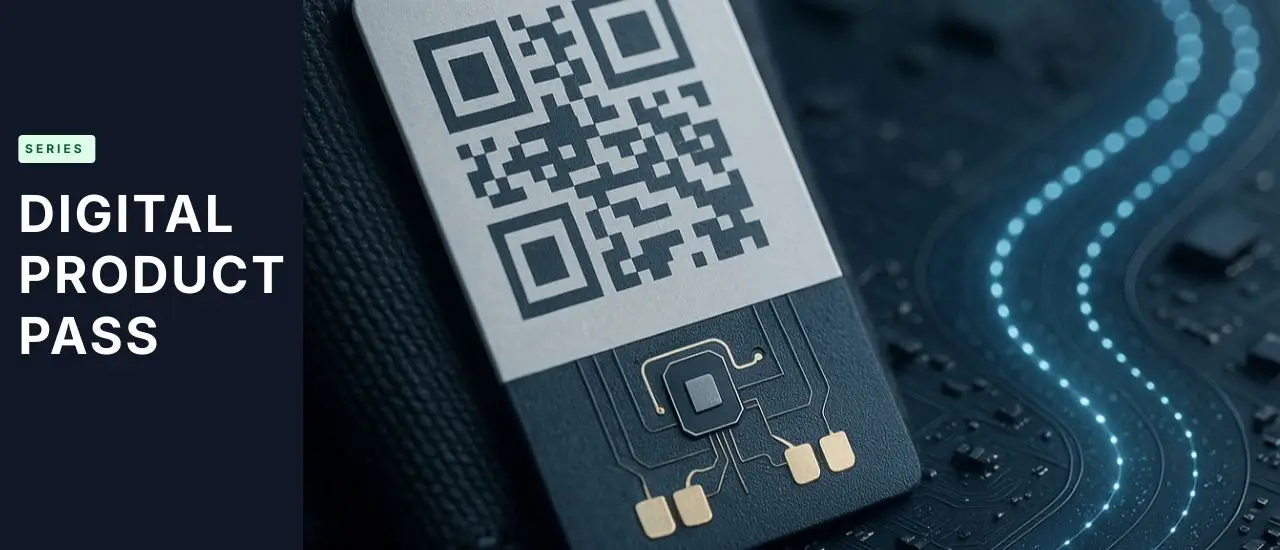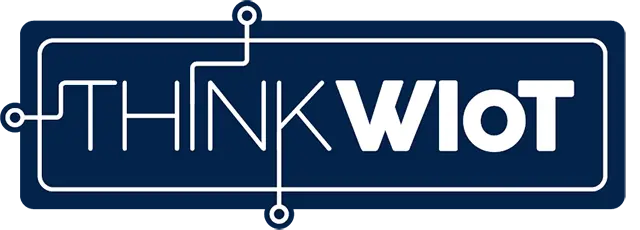RFID: Bridge Between OT and IT
Digitized Processes and Supply Chains
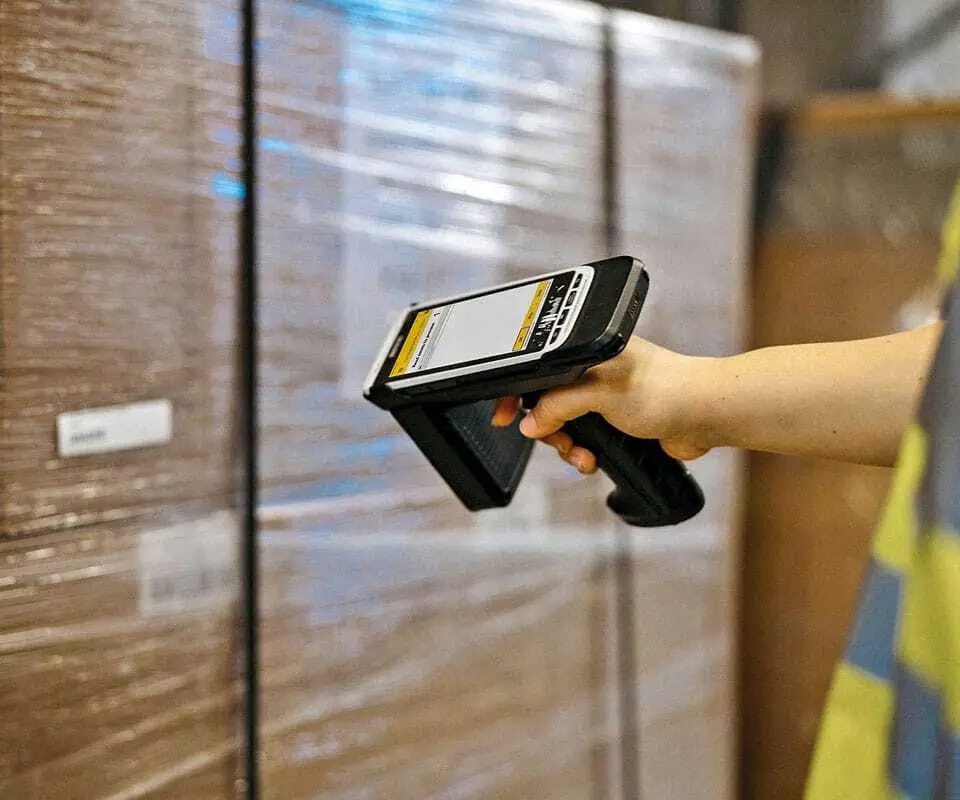
RFID handheld readers are ideal for reading tags on the move and in processes that cannot be easily automated with conveyor belt, gate or forklift readers.
Complex structures as well as considerable cost pressure present companies in the manufacturing industry and logistics with the same challenge: rapid decision making based on real-time information is becoming increasingly more important in order to stay competitive.
Today, RFID systems are the means of choice to generate decision-critical information. They bridge the gap between the physical world of production (operational technology, OT) and IT-based MES and ERP systems. By linking objects with the data of the IT systems, RFID systems generate the necessary transparency for lean processes and digitalized supply chains.
The aggregated information, such as times, locations, users, or processes completed, allow smart functions such as automated production and ordering processes, the identification of error sources or the accurate forecasting of potential bottlenecks. RFID information enables your systems and decision-makers to make the right choices.
Complex structures as well as considerable cost pressure present companies in the manufacturing industry and logistics with the same challenge: rapid decision making based on real-time information is becoming increasingly more important in order to stay competitive.
Today, RFID systems are the means of choice to generate decision-critical information. They bridge the gap between the physical world of production (operational technology, OT) and IT-based MES and ERP systems. By linking objects with the data of the IT systems, RFID systems generate the necessary transparency for lean processes and digitalized supply chains.
The aggregated information, such as times, locations, users, or processes completed, allow smart functions such as automated production and ordering processes, the identification of error sources or the accurate forecasting of potential bottlenecks. RFID information enables your systems and decision-makers to make the right choices.

RFID handheld readers are ideal for reading tags on the move and in processes that cannot be easily automated with conveyor belt, gate or forklift readers.
Transparency from Incoming Goods to Shipping

Bernd Wieseler, Head of Product Management RFID at Turck
RFID based information provides countless processes in production and logistics with transparency, from the incoming goods department to production and warehouse, right through to shipping. The returnable transport items (RTI) such as pallets, grid boxes, plastic boxes or metal tubs play a major role here. Returnable transport items are a key factor for ensuring the quality of production processes.
RFID-based container management ensures that returnable transport items are always present at the right location, in the correct quantity and quality, and at the right time. The costs for an RFID system are therefore paid back very quickly thanks to the enormous savings achieved since no missing containers need to be procured at short notice and made available at the place of use.
RFID based information provides countless processes in production and logistics with transparency, from the incoming goods department to production and warehouse, right through to shipping. The returnable transport items (RTI) such as pallets, grid boxes, plastic boxes or metal tubs play a major role here. Returnable transport items are a key factor for ensuring the quality of production processes.
RFID-based container management ensures that returnable transport items are always present at the right location, in the correct quantity and quality, and at the right time. The costs for an RFID system are therefore paid back very quickly thanks to the enormous savings achieved since no missing containers need to be procured at short notice and made available at the place of use.

Bernd Wieseler, Head of Product Management RFID at Turck
"Track and trace with RFID is the key to reliable delivery times, error-free manufacturing and agile production. We will show you how to sustainably optimize your processes at www.turck.de/tat"
RFID-Based Container Management
Benefits Compared to Barcodes
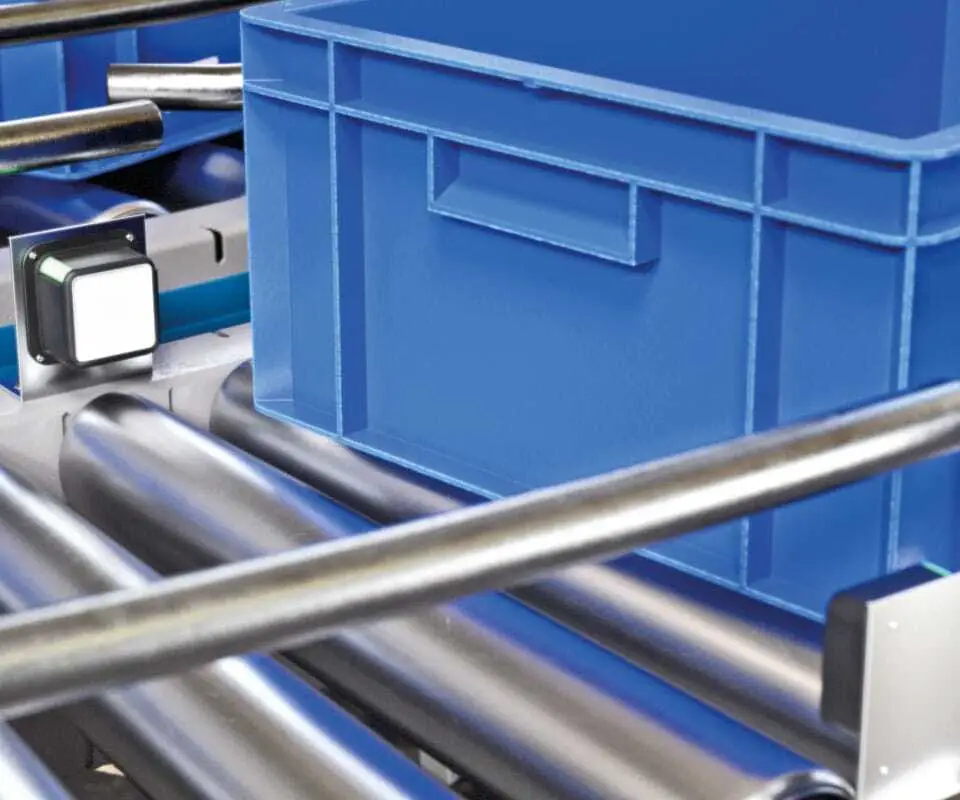
Barcodes are a relatively inexpensive identification technology, but they are more difficult to automate – especially if several containers are to be read simultaneously.
RFID offers key benefits for RTI identification compared to comparable technologies, and compared to barcodes in particular. There are thus hardly any restrictions in the use of RFID-based systems, since a suitable RFID tag is available for virtually every situation and environmental condition. Moreover, the reading of large quantities can be automated easily in an RFID-based system without any tedious and error-prone manual steps.
To ensure a smooth running RFID-based container management system, special management tools make it possible to display all RTI information on a single platform. This therefore bridges the gap between the physical world of production and IT-based MES and ERP systems.
By linking objects with the data of the IT systems, RFID systems generate the necessary transparency for lean processes and digitalized supply chains. This information enables both the systems and the decision makers to draw informed conclusions, thus enabling greater efficiency in RTI management and a high level of adaptability in response to seemingly unforeseeable events in the RTI circulation.
RFID offers key benefits for RTI identification compared to comparable technologies, and compared to barcodes in particular. There are thus hardly any restrictions in the use of RFID-based systems, since a suitable RFID tag is available for virtually every situation and environmental condition. Moreover, the reading of large quantities can be automated easily in an RFID-based system without any tedious and error-prone manual steps.
To ensure a smooth running RFID-based container management system, special management tools make it possible to display all RTI information on a single platform. This therefore bridges the gap between the physical world of production and IT-based MES and ERP systems.
By linking objects with the data of the IT systems, RFID systems generate the necessary transparency for lean processes and digitalized supply chains. This information enables both the systems and the decision makers to draw informed conclusions, thus enabling greater efficiency in RTI management and a high level of adaptability in response to seemingly unforeseeable events in the RTI circulation.

Barcodes are a relatively inexpensive identification technology, but they are more difficult to automate – especially if several containers are to be read simultaneously.
Efficient Container Management Saves Costs
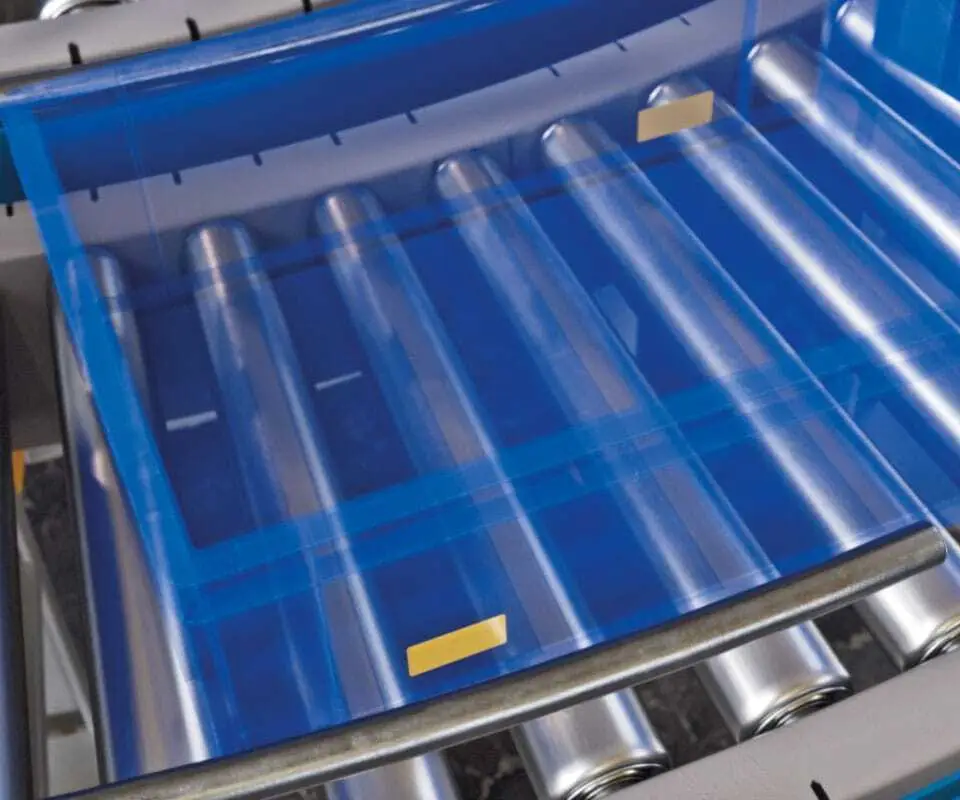
RFID tags stuck diagonally on opposite sides ensure that at least one tag is within range of a reader, resulting in consistently optimal reading results.
It goes without saying that reusable containers must not be treated like disposable items. Only efficient pool management can turn RTIs into a powerful instrument for the creation of sustainable supply chains. Shrinkage, damage or inefficient management often lead to the necessary procurement of additional RTIs in order to prevent bottlenecks and downtimes, so that the actual total stock exceeds the optimum quantity. It is often the case that nobody knows how many RTIs are in use in the entire process chain.
It is therefore particularly important to keep the number of RTIs in circulation as low as possible in order to tie up as little capital as possible. However, a sufficient number must be kept available at the same time in order to avoid breakdowns in the supply chain. The worst case would be the standstill of the just-in-sequence or just-in-time line because of the absence or lack of reusable containers where they are required.
It goes without saying that reusable containers must not be treated like disposable items. Only efficient pool management can turn RTIs into a powerful instrument for the creation of sustainable supply chains. Shrinkage, damage or inefficient management often lead to the necessary procurement of additional RTIs in order to prevent bottlenecks and downtimes, so that the actual total stock exceeds the optimum quantity. It is often the case that nobody knows how many RTIs are in use in the entire process chain.
It is therefore particularly important to keep the number of RTIs in circulation as low as possible in order to tie up as little capital as possible. However, a sufficient number must be kept available at the same time in order to avoid breakdowns in the supply chain. The worst case would be the standstill of the just-in-sequence or just-in-time line because of the absence or lack of reusable containers where they are required.

RFID tags stuck diagonally on opposite sides ensure that at least one tag is within range of a reader, resulting in consistently optimal reading results.
Multi Tag Reading
Tracking on the RTI
An investment as large and constantly moving as reusable containers should therefore be efficiently controlled to match supply and demand. Seamless tracking requires the unique identification of each container as well as real-time communication with all participants within the circuit.
For this, it may be useful to capture several containers at the same time. If a pallet contains several containers with RFID tags, for example, multitag reading is required, i.e. the simultaneous reading of several RFID tags. This is usually done via RFID gates, which are equipped with multiple antennas and thus reliably detect the tags without requiring direct visual contact.
Selecting the right type of reusable container is also an important task. Container sizes range from shoe boxes to pallets for larger goods. They should be reliable, sustainable and durable. However, each industry also has its own requirements for reusable containers, and so the range of variants is very large.
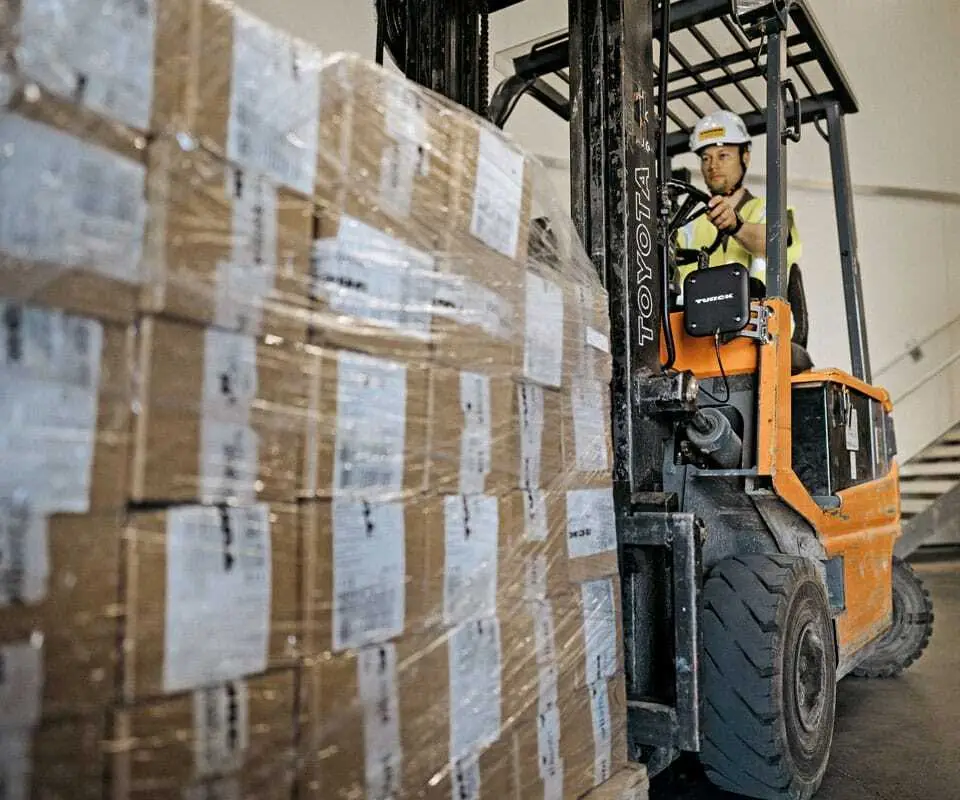
The forklifts equipped with RFID readers allow reliable and fast identification of pallets and containers.
Suitable RFID Tags
To ensure seamless reusable container tracking, all container types must be detectable using RFID. It is therefore important that the RFID tags used can be read consistently and reliably on all base surfaces – for example, on plastic, metal and ESD (electrostatic discharge) materials, as well as on folded reusable containers.
The choice of the appropriate RFID tag is fundamental to the architecture of an RFID solution and depends on the application. If the tags selected are unsuitable for the application, not sufficiently robust or powerful, the read rate of the RFID system will be too low and the entire system may fail. The technical requirements and demands of the process in question must therefore be understood in as much detail as possible.
RFID Solutions from Turck and Turck Vilant Systems
Turnkey RFID Solutions
Besides the RFID tags that can be attached to or embedded in the RTI to be identified, a turnkey RFID solution typically consists of the RFID reader points and their antennas, RFID server applications for data analysis, system monitoring and maintenance, including an integration layer to support the most common business systems such as ERP and WMS, integration with the customer's back-end system, and an implementation plan.
Turck can cover the complete range for turnkey RFID solutions through its subsidiary Turck Vilant Systems TVS. TVS has been designing and implementing turnkey RFID system solutions including its own middleware and ERP integration for intralogistics, asset tracking and inventory management for 20 years.
Coupled with Turck's many years of experience with RFID for production control, both companies offer complete solutions, which cover the entire supply and production chain – from the supplier to production right through to shipping.
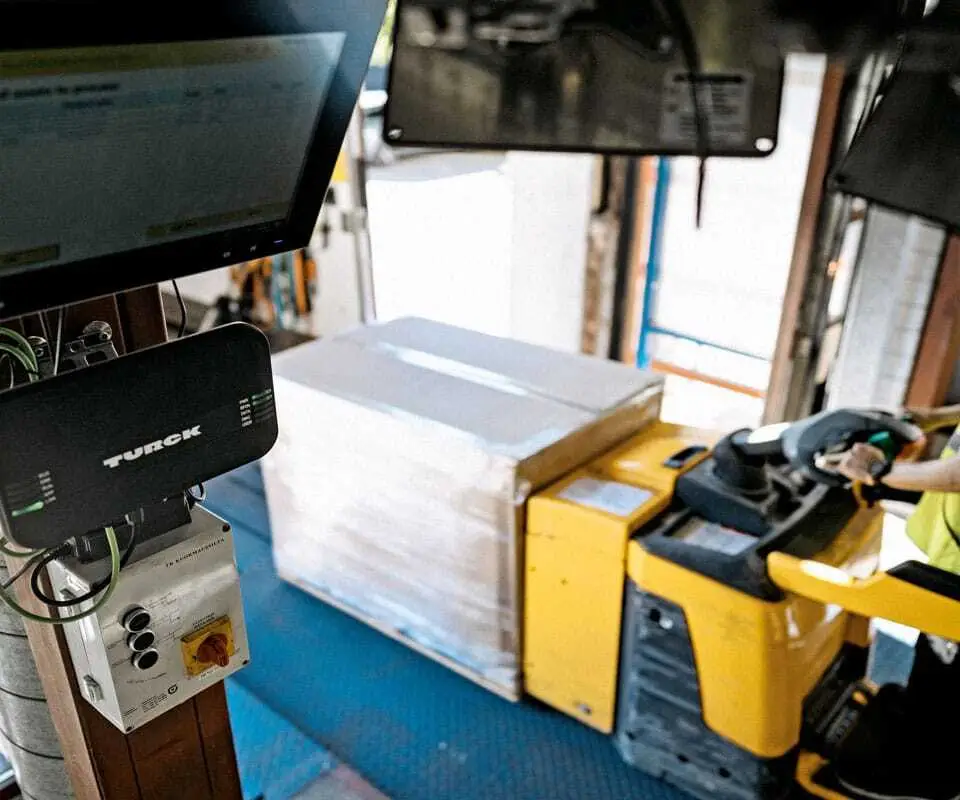
Turck can cover the complete range for turnkey RFID solutions through its subsidiary Turck Vilant Systems TVS.
Five Phases to Success
Phase 1
An RFID project with Turck Vilant Systems is divided into five phases. The first phase of the project is about developing an understanding of the customer's needs and familiarizing the customer with RFID. The starting point for customer engagement is the site survey to obtain an expert analysis of the customer's plans and processes. Based on the site survey, the expert prepares a proposal on how RFID technology can be deployed and where the ROI might be. These services are free of charge for the customer.
Phase 2
In the second phase, specific RFID feasibility studies will then be conducted. For customers with no experience with RFID, this starts with a proof of concept. This means that RFID equipment is tested at the customer's site to ensure that tags, readers or applications will work in the intended application.
Phase 3
In the third phase, everything is prepared for the rollout in a pilot project. Before it is put into operation across the board, the RFID system is tested on a production line or plant. The customer's use of the system can help uncover sources of error that may not have been previously considered.
Phase 4
Rollout and commissioning take place in the fourth phase. The customer installs the RFID readers, with a Turck Vilant Systems technician on site to set up the software and make sure everything works correctly. All processes are tested live and customer employees are trained, optionally in English, French, German, Swedish or Finnish.
Phase 5
The fifth phase is started once the system is ready for operation – the support. Continuous system operation must be guaranteed, around the clock – even during holiday periods. Turck Vilant Systems meets this customer expectation and provides worldwide service and support 24 hours a day, seven days a week.
White Paper: “Reusable Container Management in Real Time”
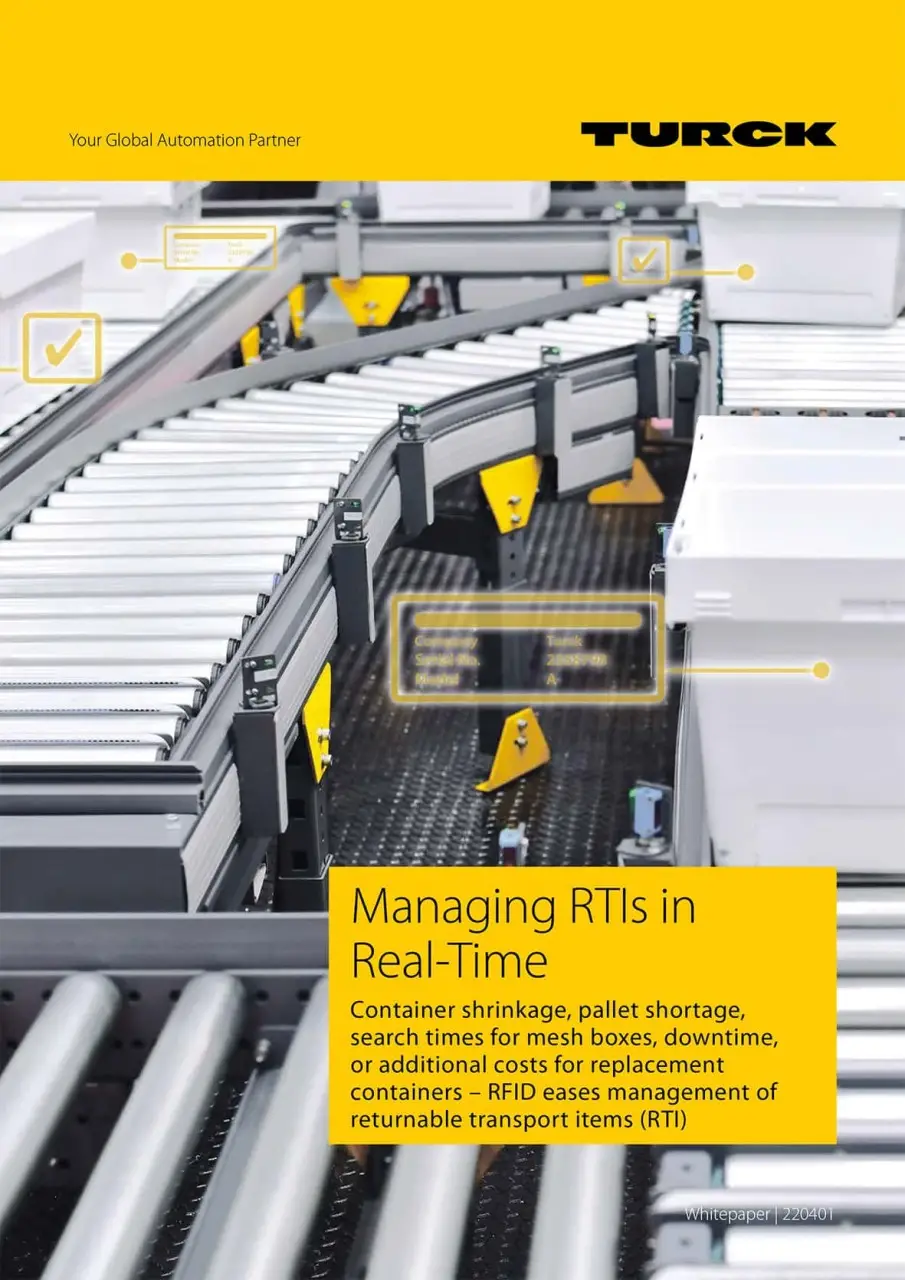
Managing RTIs in Real-Time
The white paper details how enormous potential savings can be achieved by using radio frequency identification (RFID) technology to manage RTI pools. It also discusses the various identification technologies that can be used to uniquely assign RTIs – and which ones are best suited for specific application scenarios.
The white paper details how enormous potential savings can be achieved by using radio frequency identification (RFID) technology to manage RTI pools. It also discusses the various identification technologies that can be used to uniquely assign RTIs – and which ones are best suited for specific application scenarios.

Managing RTIs in Real-Time
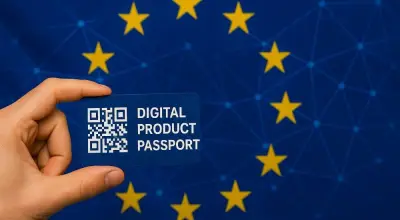
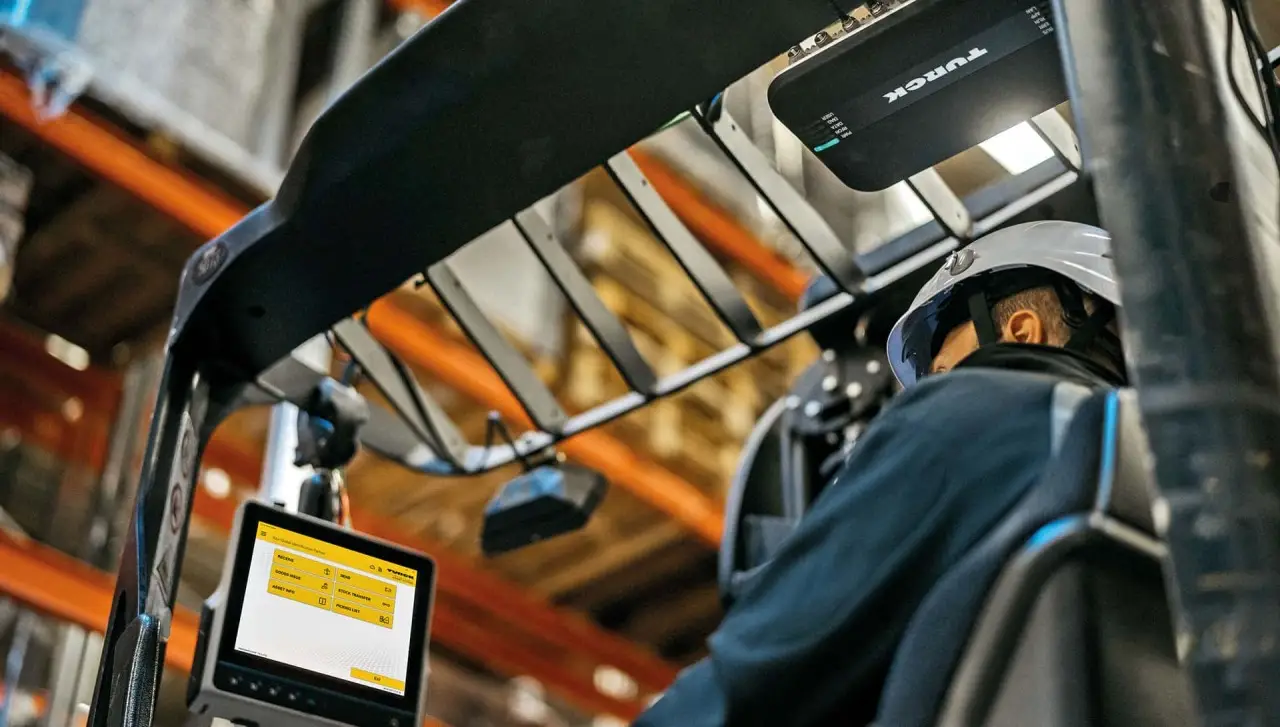

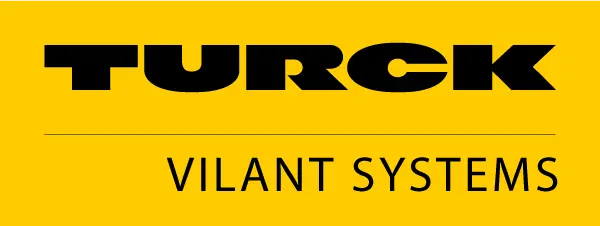
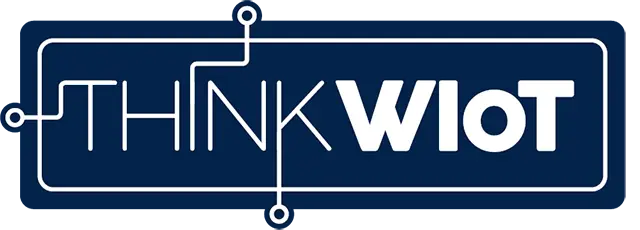
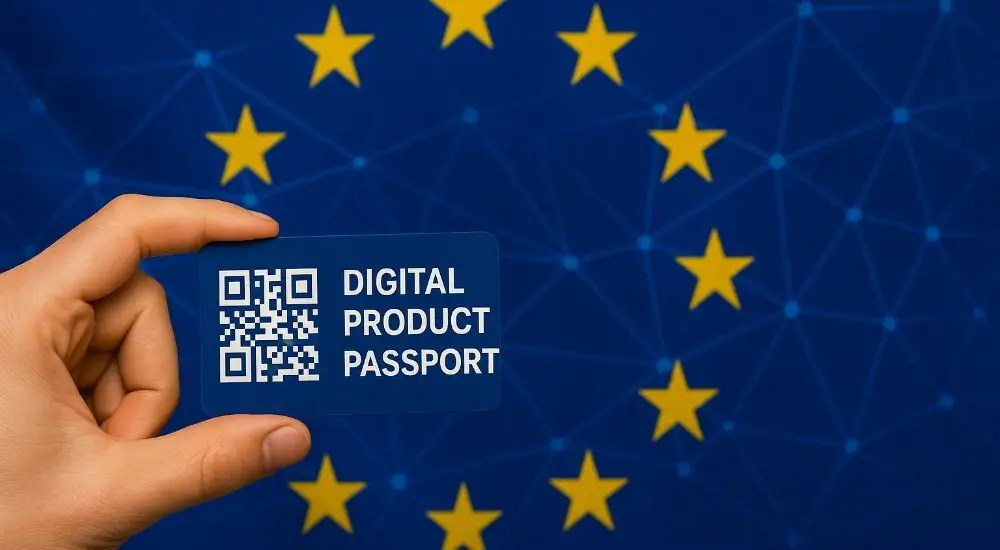
-über-Wi-Fi-HaLow-responsive.webp)
